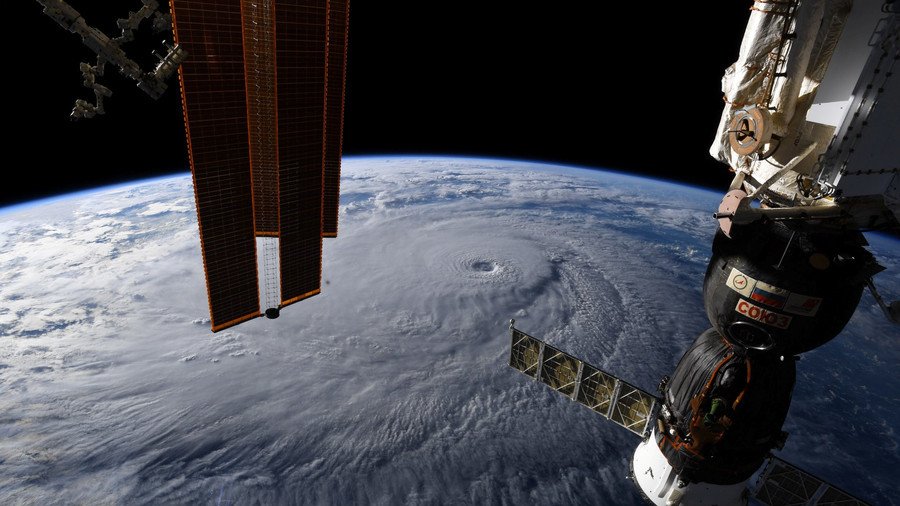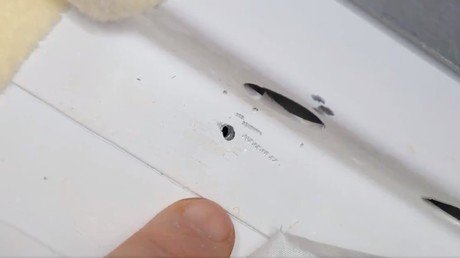ISS hole saga's new twist: More drill scratches discovered on outside hull

A lingering saga of the mystery hole leaking precious air from the International Space Station is far from over, as drill scratches have been discovered on the station’s anti-meteorite plating.
It was initially thought (let us leave conspiracy theories behind) that the air leak, which was discovered in late August on Soyuz spacecraft docked at the ISS was caused by a micrometeorite. Later on, Russian media revealed the drill hole was made on the ground by a reckless assembly worker – he was identified and properly sanctioned, we were told.
Yet, the story does not end there. “There are drilling traces not only inside the living module [of the ISS], but also on anti-meteorite plates,” a space industry source told TASS news agency. These plates are mounted outside of the station’s hermetic hull.
“The one who made the hole in the hull passed straight through it and the drill head hit external non-hermetic protection,” the source explained.
Judging by previous media reports, there is a high probability of negligence. The worker in question apparently accidentally drilled the hole, but instead of reporting it, simply sealed it, according to Russian media.
The makeshift sealant held for at least the two months the Soyuz spacecraft spent in orbit, before finally drying up and being pushed out of the hole by air pressure. The ISS crew had noticed the drop of pressure in late August.
Having found themselves in an emergency, the crew fled in the Russian segment of the station as soon as the alarm went off. They began locking down modules of the station one after another, and were eventually able to detect the source of the problem in the Soyuz spacecraft docked to the ISS.
The hole was located near the toilet and covered by decorative fabric. Using an ordinary toothbrush and an endoscope, they found that only one of the two-millimeter cracks had actually pierced the hull and was leaking air.
The Russian crew members used impromptu means of fixing the problem: epoxy-based sealant with metallic additives to plug the hole. Mission Control later advised the crew to place another patch on the crack, which was immediately done.
Think your friends would be interested? Share this story!















